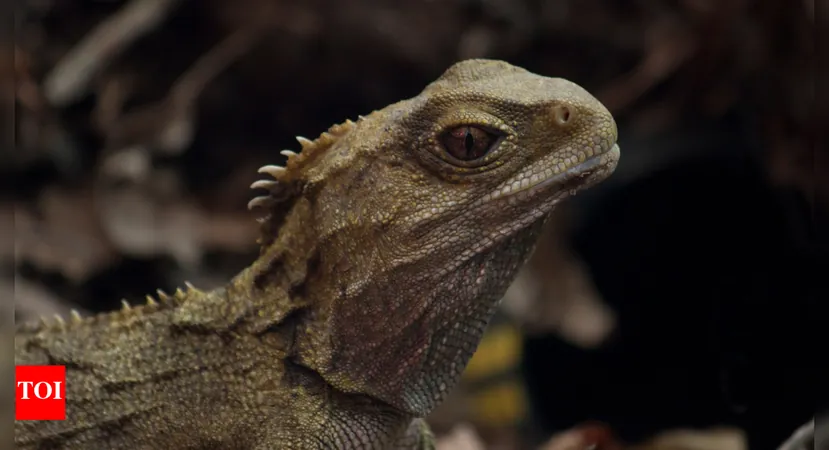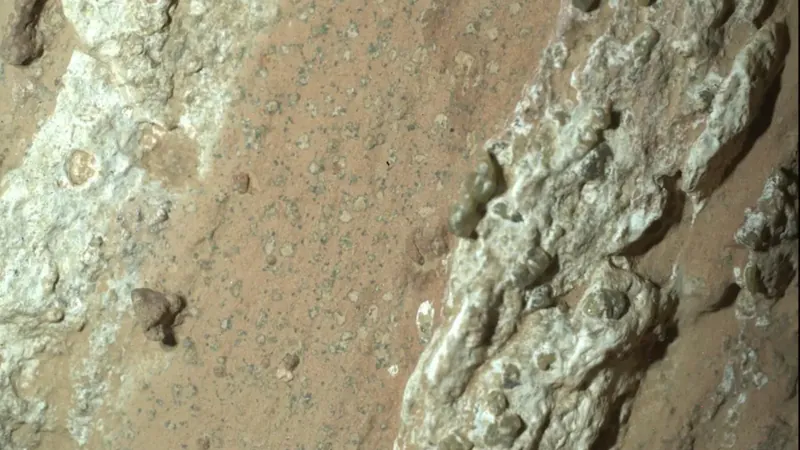
Ancient Reptile Fossil Uncovers a 242-Million-Year-Old Mystery
2025-09-19
Author: Wei Ling
Unearthing the Past: A Groundbreaking Discovery
In a remarkable find, scientists have uncovered a 242-million-year-old fossil known as Agriodontosaurus helsbypetrae in Devon, dramatically shifting our understanding of reptilian history. This incredible ancient creature is now the oldest known member of the lepidosaur group, which includes modern lizards, snakes, and the tuatara, suggesting that our understanding of their origins is still evolving.
A Closer Look at Agriodontosaurus helsbypetrae
What makes this fossil truly astonishing is its unique structure, breaking previous assumptions about early reptile skulls and feeding habits. Unlike its modern relatives, this species lacks several key features that we typically associate with lepidosaurs but boasts impressive, large teeth. This indicates a wider variety of evolutionary paths taken within this lineage.
A Glimpse into the Middle Triassic Period
Dating back to the Middle Triassic era—long before the age of dinosaurs—Agriodontosaurus helsbypetrae provides a rare insight into reptilian life approximately 242 million years ago. The discovery offers scientists a chance to visualize and better understand the anatomy and functionality of early reptiles, showcasing an age when the evolutionary paths of reptiles were beginning to diverge.
What the Researchers Found
Researchers from the University of Bristol, who first identified this remarkable species in 2015, have detailed their findings in a recent publication. The fossil unveils a new perspective on the evolutionary history of lepidosaurs, highlighting a timeline that extends far beyond what was previously believed.
Surprising Skull Features
Unlike modern species, Agriodontosaurus helsbypetrae has no teeth on its palate and lacks a hinged skull—two characteristics commonly found in contemporary lepidosaurs. However, this ancient reptile does possess an open lower temporal bar, a feature that enhances skull flexibility.
The Triangular Teeth: A Clue to Feeding Habits
Perhaps the most intriguing aspect of this fossil is its teeth: large, triangular structures likely suited for piercing and shearing the tough exoskeletons of insects. According to Professor Michael Benton, one of the research supervisors, these teeth resemble those of today's tuatara, hinting at a shared feeding strategy amidst a diverse lineage.
What This Means for Reptile Evolution
The discovery of this ancient reptile emphasizes that early lepidosaurs were experimenting with various skull shapes and feeding techniques rather than adhering to a single evolutionary blueprint. This suggests that important characteristics we see in modern reptiles, like palatine teeth and hinged skulls, may have developed later or in different combinations across various species.
A Living Legacy
Often referred to as a "living fossil," the tuatara’s lineage is now seen as more diverse than previously thought, thanks to findings like Agriodontosaurus helsbypetrae. This ancient specimen not only provides crucial insights into the past but also enriches our understanding of the evolutionary journey leading to the reptiles we see today.





 Brasil (PT)
Brasil (PT)
 Canada (EN)
Canada (EN)
 Chile (ES)
Chile (ES)
 Česko (CS)
Česko (CS)
 대한민국 (KO)
대한민국 (KO)
 España (ES)
España (ES)
 France (FR)
France (FR)
 Hong Kong (EN)
Hong Kong (EN)
 Italia (IT)
Italia (IT)
 日本 (JA)
日本 (JA)
 Magyarország (HU)
Magyarország (HU)
 Norge (NO)
Norge (NO)
 Polska (PL)
Polska (PL)
 Schweiz (DE)
Schweiz (DE)
 Singapore (EN)
Singapore (EN)
 Sverige (SV)
Sverige (SV)
 Suomi (FI)
Suomi (FI)
 Türkiye (TR)
Türkiye (TR)
 الإمارات العربية المتحدة (AR)
الإمارات العربية المتحدة (AR)